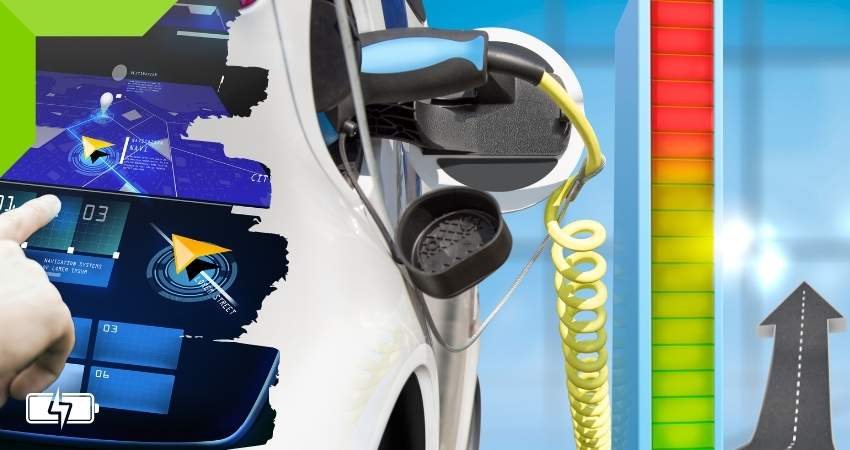The range problem of electric cars is yet to be tackled fully. As per the current situation, most electric vehicles need charging when their gasoline counterparts have lost only half their tank. This particular issue has ignited the need to extract the maximum out of the limited EV power supply. But the good days are not far away: EV range is projected to magnify soon. The current average EV range is estimated to be 275 miles, expected to grow to 400 in six years.
For the time being, we can apply similar tactics to enhance the range of combustible engine cars: doing almost the same that improves fuel economy in gasoline-powered vehicles and can do the job for electric cars, too. Though the logic backing, it may differ.
How to Increase Electric Car Range?
1. Avoid Going Fast
Driving at high speeds pulls more power from the battery. Speed is the most prominent factor why electric car range is impacted, which is why most manufacturers tend to limit it.
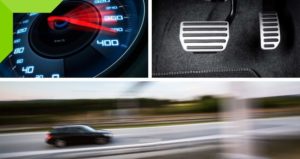
It does not only reduce the battery charging in general, but it also leads to increased air resistance, which draws extra power from the system.
| The EV Sweet Spot!
Working at 14 kilowatts, most EVs give their best range when driven at 60 miles an hour. |
2. Do Not Paddle Hard
Heavy accelerations dissipate battery energy more than usual, decreasing the range of an EV. Besides, in the long term, it may catalyze wear and tear. Steer clear of this habit!
The Physics behind it is simple: hard acceleration causes much current drawing from the battery, and since the energy dissipation is proportional to the square of the current, the battery charging is depleted fast.
3. Utilize Regenerative Braking
The regenerative braking system can use negative torque applied to convert the kinetic energy into the electrical one that charges the battery. It helps capture the ‘otherwise lost’ energy.
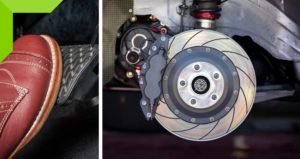
Fortunately, almost all EVs in the US market now come with a regenerative braking system. Depending upon the make, there can be different methods to turn on this system in an electric car to extract benefits. But a little disclaimer here: the system’s efficiency is not 100%; instead, it varies between 16 and 70.
4. Use Climate Control Wisely
By far, heating and cooling systems are the most considerable energy drains in EVs, consuming between four and five kilowatts on average. In extreme weather conditions, the consumption can go even beyond that.
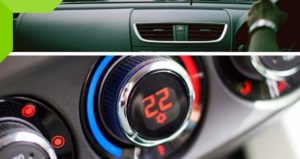
To cope with the heating problem, stick to the following recommendations:
- Avoid using the heater as much as possible.
- Pre-heat the cabin when your EV is plugged but turn the system off once it hits the road.
- Use heated seats and steering covers.
While in summer, do these:
- Pre-cool the car when plugged in.
- Whenever possible, use the fan only, not the compressor.
- Open the window. Though it may cause increased air resistance, the battery drain will be less as compared to that on AC.
5. Pay Attention to Tire Pressure
Experts say badly inflated tires can impact electric car range three times; they could do the same in the case of gasoline cars.
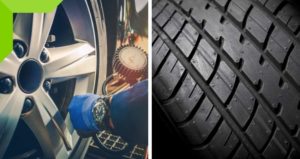
Incorrect air pressure in a tire increases the rolling drag and leads to increased wear and tear – ultimately putting the brunt on the batteries. In fact, in the light of a recent study, if all EVs currently in use worldwide have their tires inflated properly, about 18 million kilowatt hours can be saved annually.
| Fact!
Air pressure in a tire can vary one pound square inch with every 10 Fahrenheit increase or decrease in the temperature. |
6. Keep It Wispy
Less load in an electric car means lesser power consumption, thus adding to the range; you should avoid putting unnecessary stuff in the trunk.
Unfortunately, electric cars are heavier if compared to combustible engine ones – mainly because of the added weight of batteries, the framework around them, and the metal armor for their protection in the case of impact. This has already slowed electric cars and decreased their range, and increasing weight worsens the problem.
7. Reduce Air Drag
Every 10% reduction in air resistance can increase the EV range by 5%. But since every EV has a unique design and shape that faces some de trop air resistance, nothing much can be done about it.

Most drivers can refrain from using attached cargo carriers on the roof to avoid contributing to the adverse effects. Furthermore, spoilers are a great idea because they alter the airflow above, underneath, and along the sides of the vehicles, ‘spoiling’ the negative impacts of the air resistance.
8. Plan the Trip
Be prudent. Take a trip that is efficient for your electric car’s battery.
A route that is easier to maintain the sweet spot speed and does not cause hard accelerations is the best choice for driving electric cars. Conversely, the ways that are hilly and steep must be avoided as well because as the car climbs, it consumes more energy than usual. Fortunately, electric cars are equipped with navigation systems that help drivers plan such trips; use it to your advantage and enjoy the increased range.
9. Manage the Charging
Electric car batteries lose charging slowly over time and do not stay for long at their full potential even when unplugged at 100%; they slowly begin drawing power due to the requirement of various electrical components and systems present in the car.
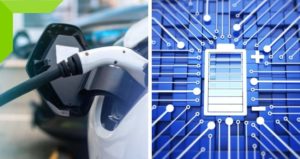
Therefore, storing the car fully charged, for a day or two at a minimum, before hitting the road is not a good idea – you might lose some precious miles due to energy losses. Opt for fully charging your vehicle right before your drive.
Read: How to Charge Electric Cars at Home?
10. Keep the Battery Healthy
If your electric car’s battery is healthy, it will wear and tear less; consequently, the range will decrease slowly.

Battery capacity can decrease in the long run for several reasons – for instance, when discharging occurs at a much faster rate. Ultimately, the wear and tear of the ‘powerhouse’ of an EV can impact the range negatively. But with maintained battery health, the speed of capacity waning can decrease. One of such activity is to restrict the charging to 80% for short trips; it may increase the battery life. But while planning more extended trips, it is perfectly fine to go past this figure.
11. Get a Bigger Battery
A larger battery means an enhanced electric car range (keeping the load constant). However, the luxury of choosing to fit a battery with a bigger capacity for the same EV is nonexistent. But it could be possible shortly.
Read: How Much Do Electric Car Batteries Cost?
Some EV manufacturers, nevertheless, offer different variants of the same make and model in terms of battery size. For instance, Nissan Leaf is available in 40- or 62-kilowatt-hour batteries. If you are faced with such a choice, do go for the bigger one.
12. Charge Whenever Possible
Charging your electric car frequently, even for brief intervals, can add a few extra miles to its range. Thanks to the plethora of charging stations, doing so is straightforward.
Though the frequent use of DC fast charging may damage an EV battery, it is, most often, safe to use standard charging. With the doubt gone, you should charge your car typically whenever you get a chance. When you sit at a coffee shop with an EV charging station nearby in the middle of a short trip, do not wait to get home and charge your horseless carriage; do it right there – you will add some precious range until you finish the cup!
Read: Can You Leave an Electric Car Plugged in Overnight? (5 Benefits)
13. Update the Software
Various sources report that electric car software updates can enhance the range. From time to time, manufacturers can bolster their car’s efficiency by making some tweaks for better control of the hardware.

Tesla’s 2020.4 updates, for instance, have extended the range of the Model X cars by 13 miles and Model S by 17 miles. Similarly, Tesla issued a software update in 2017 that enhanced the range of its cars by up to 40 miles. Though updating the software seems to be a minor task, it could be a blessing in disguise!
14. Keep in Touch With the Professional
A pro will take no time to trace if your car has some bad system that causes its battery to drain very quickly, while it could be difficult for you to do it yourself.
Since there are several sophisticated items in electric cars that a non-professional may miss quite easily while debugging, professional help is highly recommended to keep the range healthy. Simply put – just listen to what the experts have to say!


